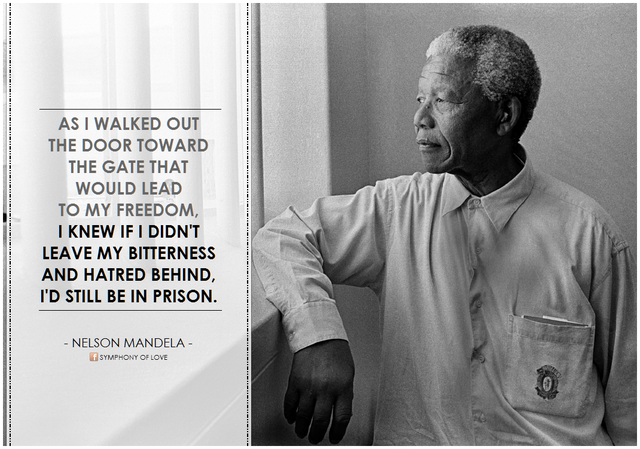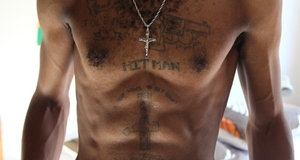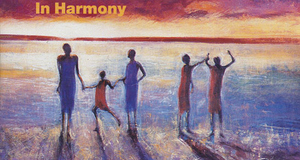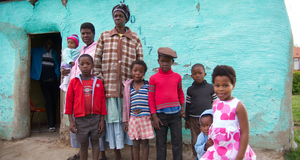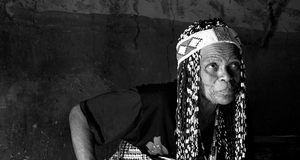The Apparition of Fading Apartheid: Racialized Vision, Khaya Mthethwa, and Idols SA
By
2013, Vol. 5 No. 03 | pg. 1/2 | »
IN THIS ARTICLE
KEYWORDS
AbstractThis essay examines the first black winner in 2012 on Idols SA, Khaya Mthethwa (Appendix 1), the TV format of the Idol brand, and the social construction of racialized vision in the context of South Africa as a post-colonial nation from a visual culture perspective. Theoretically, this essay presents an interdisciplinary approach of Marxist political economy, Debord’s concept of the spectacle (1983, p. 13), and Foucauldian biopower (2013, p. 134). Although somewhat contradictory, these theories present a nuanced understanding of how Mthethwa’s spectacle is encased in a racialized form of vision. His victory focuses on his blackness as essential to the commodity fetishism (Marx, 1976) that presents a story of racial repair, ignoring systemic issues of class division in South Africa. From a political economy perspective, the structural framework of Idols SA exploits its production labour by employing non-unionized workers, utilizing their audience as free labour, and commodifying access to both its audience and ratings. This essay closes by looking at forms of resistance to the racialized vision of Mthethwa’s spectacle in pop-cultural discourse and appropriating bell hook’s idea of the “critical gaze” (2009, p. 446) with a political economic perspective to understand commercialized televisual commodities and the role of advertisers’ desiring access to specific audiences. For visual culture studies, the bodily markers of race, of whiteness and blackness, have significant impact on how colonialism and apartheid in South Africa constructed a form of racialized vision with which the colonizer sees the colonized in relation to social power. Appropriating Michel Foucault’s theory of biopower (2013), “the extension of power over biological life [that] marked the emergence of modernity,” Nicholas Mirzoeff theoretically applies it to how bodies of colonized African slaves were visually created by racialized markers of difference to denote a hierarchical inferiority that legitimized creating docile bodies as free slave labour through vision (p. 134). Idols SA, a reality television program, and its eighth-season and first black South African winner, Khaya Mthethwa, are the case study which this essay will examine in terms of how biopower produces the black body with markers of difference as a subject of racialized vision. This essay will explore forms of domination: the racialized visuality of Mthethwa’s body as spectacle, how commodity fetishism obscures the class struggles between whites and blacks in South Africa, how Idols SA exploits free labour, and it will explore forms of resistance: from discourses of Idols SA practicing racism and allegations of a voting system that disenfranchises black voters to bell hook’s concept of “the critical oppositional gaze” (2009, p. 446).In particular, the theories of Guy Debord’s spectacle, Karl Marx’s commodity fetishism, Michel Foucault’s biopower, and Andrew Ross’ arguments on free labour are applied to this case study. The spectacle of Mthethwa’s victory provides a reality of racial progress behind which a globalized commodity exploits the labour of its audience, obscures issues of class, and perpetuates racialized vision. Historical Context of Colonialism in South Africa, and BiopowerHistorically, the relationship between colonialism and South Africa is markedly different than other colonies for utilizing indigenous slave labour, not foreign labour (Beinart & Dubow, 1995, p. 2). The transition from segregation to apartheid spanned from 1948 to 1990, during which the election of National Party governments resulted in structurally racialized discrimination, imposing hierarchies that favoured the white supremacy of Afrikaners, who were the colonial descendants of Dutch and French colonizers, over the black South African population. In the elections of 1994, democracy emerged with the African National Congress, and apartheid ended (p.3). Moreover, Mirzoeff’s application of biopower can theoretically explain “the extension of power over biological life [that] marked the emergence of modernity” (2013, p. 134) to how the bodies of colonized African slaves were visually created by racialized markers of difference to denote a hierarchical inferiority that legitimized creating docile bodies as free slave labour through vision.
Photo: Flickr/Pictoquotes CC-2 Mirzoeff makes the transhistorical connection between colonialism, globalization, and hurricane Katrina where the same racialized form of vision persists with its ability to wield power over the marked black body. The “institutions, disciplines and regulatory controls” of colonialism that produce and control bodies through power, hierarchy, and visual forms of media transitioned time and space into the modern globalized world (2013, p. 134). For example, Anne McClintock’s (2009) work on colonial advertising of Pears soap showcases its didacticism as a visual form of biopower teaching individuals how to see race, and the contradictory ways commodities attempt to “cleanse” the black body of “abnormality.” Such a visual metaphor serves to set socially constructed hierarchical categories of race globally and in South Africa throughout the periods of segregation and apartheid and currently in Idols SA. Idols SA, Corporate Ownership, and Khaya MthethwaSouth Africa’s present-day broadcasting industry operates within a mixed mode of “commercial, community, and public service” within a postcolonial democratic state and a market economy (Horwitz, 2001, p. 38). These broadcasting institutions are places where biopower (Mirzoeff, 2013, p. 134) reproduces forms of racialized vision that impart power over individuals to construct corporeal categories of normality and abnormality. M-Net, a subscription-based television station, hosts Idols SA, a reality TV shows based on the Idol brand franchise produced by Fremantle Media (Smith, 2012) and owned by RTL Group, a mass media conglomerate (RTL Group). Idols SA follows the same format of its counterpart: contestants cover other musicians’ songs, the audience votes via text message for a candidate, a panel of judges critique the performances, and contestants are voted off based on their total number of votes, until one winner remains. The 2012 winner, Mthethwa is a 25-year old black male from Durban, South Africa, and over the previous seven seasons, three of the female winners were brown, three of the male winners were white, and one female winner was white. Therefore, as Mthethwa is the only black male to win, some newspapers present this as a moment of racial progression away from the racist history of apartheid. Blackness, Whiteness, and the Social Construction of VisionThe visualized black body moreover has and continues to be a site of knowledge production that has been subjected to forms of racialized vision. The visuality of the black body is assumed to be naturally different and ignores the social construction of race. Stemming from the colonial project to make the world knowable through vision, the black body continues to be a subject of this “project.” This, of course, ignores the so-called objective position of whiteness to make the black body visible in a racialized way and to continually perpetuate social inequality from this normative position. This assimilation process persists in the globalized world, particularly, in places where the project of “civilization” can be found in visual technologies, such as television, that perpetuate the visuality of racialized bodies. The Spectacle of MthethwaThe spectacle of Mthethwa’s televised victory (NewAgeOnline, 2006) is situated within racialized vision of domination that offers the appearance of better social conditions in South Africa, an alternate reality. For Debord, commodified images, or spectacles, reflect the dominant “model of social life” in a commodity-driven marketplace, including the ubiquity of televisual images (1983, p. 13). These images, however, are highly selective: the spectacle of Mthethwa is the product of Idols SA, Fremantle Media, and the RTL Group. Such spectacles produce the appearance of that which is “good” (p. 15): the success of Mthethwa to ascend his class position through hard work, and of his racialized black body to show that the violent legacy of apartheid is being repaired within a democratic, capitalistic society that from its inception has perpetuated racism—what Debord argues is “reality [turned] on its head” (p. 14). With a “monopolization of the realm of appearances,” or racialized vision (p. 14), the visuality of Mthethwa comes not to be a signification of racial repair but one of racial assimilation into the corporeal normality that whiteness has constructed and adorned on blackness. The “good” behind these images, arguably, is not that Mthethwa’s black body becomes a synecdoche for all black South Africans, but that he conforms to the white idea of non-threatening blackness. This is his “success” which other blacks also ought to desire. Debord argued that Western philosophy has failed from its hierarchical, taxonomical indenture to vision as the ascendant sense (p. 17). For Mthethwa, this means that it is the ability of whites to socially construct the ways in which his black body is ordered into a category of abnormality that necessitates vision’s permanence to racism. His success, therefore, is not racial progress but serves to further racialize vision. Mthethwa’s win is a reality about racial progress which his spectacle dictates and with which it appeases racial tensions in the pop-cultural discourse of Idols SA. In a capitalist economy of mass media spectacle commodities (p. 16), better race relations cannot exist within a system that re-entrenches old forms of power that visually racialize the black body. Commodity Fetishism: Class (Dis)missedAppropriated by Debord, commodity fetishism (Marx, 1976) elaborates the ways in which the spectacle of Mthethwa and the biopower (Mirzoeff, 2013) of the globalized television industry ignore the class differences of whites and blacks in South Africa. In some news media, Mthethwa’s blackness has been central to his identity (“'Race' heats up in Idols final,” 2012; “South Africa Has a Black ‘Idol’,” 2012; “Idols South Africa crowns first black winner,” 2012). The purpose of this racialized essentialism is to elide the class divide in South Africa. Seekings (2003) notes that while there is an increase in the black middle class, a larger numbers of blacks compose an “underclass” via “unemployment, poverty and social exclusion.” Many white people continue to enjoy white privilege through their “class position” but a small percentage is “downwardly mobile” (p. 2).Continued on Next Page » Suggested Reading from Inquiries Journal
Inquiries Journal provides undergraduate and graduate students around the world a platform for the wide dissemination of academic work over a range of core disciplines. Representing the work of students from hundreds of institutions around the globe, Inquiries Journal's large database of academic articles is completely free. Learn more | Blog | Submit Latest in Business & Communications |

